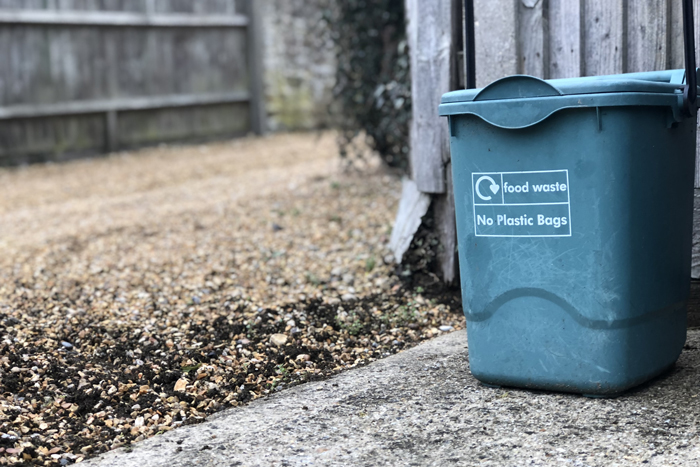 Feature Image by Patricia Valério
Feature Image by Patricia Valério
Do you ever find yourself at the end of a meal — stumped by your inability to just take one more bite? Yeah, us too. We know that sometimes our eyes are hungrier than our appetites are, so we end wasting a lot of food.
According to the U.S. Department of Agriculture, “in the United States, food waste is estimated at between 30-40% of the food supply.” This is both at the retail and consumer level, and many things contribute to this number that might be out of your control (think food spoilage or recalls). In addition, a typical household might even throw over 400 pounds of food away each year.
To play your part in reducing food waste, you can easily compost your food scraps. Composting is super for the environment and has several benefits, like reducing landfill waste, introducing beneficial organisms to Earth’s soil, and feeding nutrients to your plants! According to Eartheasy, “composting offers a natural alternative to chemical fertilizers when applied to lawns and garden beds.”
If you’re interested in doing some good with your leftover food, here are some tips on how you can compost your food.
Cook with your food scraps
You can make delicious soups with recycled ingredients and unfinished leftovers. Just be sure to store your scraps in plastic bags or a kitchen compost pail so they stay fresh until you’re ready to use them for something else. Just like that, you’ve recycled your food.
Keep your scraps in a pail or bucket
If you don’t plan to cook with your food scraps, you can store your scraps in a pail until you’re ready to move them to their next location. Pails are often great because they offer a tight-fitting lid with generous storage and they’re easy to clean! You can empty this every day or every few days, a timeline that differs from person to person.
Incorporate your scraps into your soil
It’s as easy as it sounds — start digging. In this instance, you’ll want to build a trench that serves as the foundation for your garden. Depending, you’ll want to dig about 10 to 12 inches deep. Once done, throw in the items and mix them in with the soil. You’ll want the food to be more refined so they blend better. Give it a few months before you begin to plant on top of the now nutrient-rich soil. If you’d like to try an alternative method, you can add the scraps to a raised garden bed and then bury them slightly into the garden.
Before you get started, be sure to check with your city to make sure you can properly compost your food scraps. Some cities have rules and regulations, so be sure you know what those are! If you don’t have a garden or somewhere to dump your scraps, you can check to see if your city offers local drop-off or curbside pickup.
xx, The FabFitFun Team




